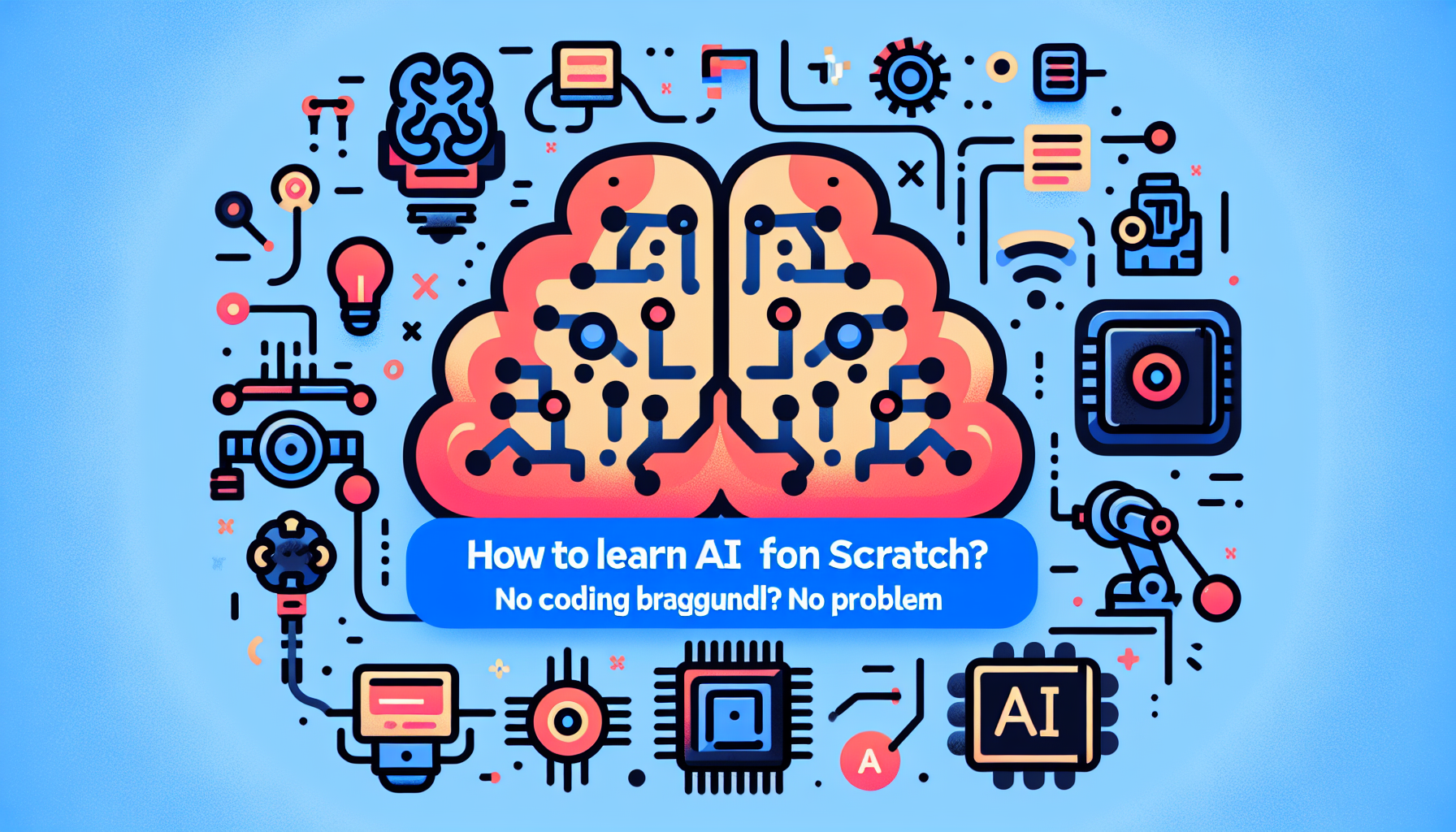Artificial Intelligence (AI) has become a cornerstone of modern technology, influencing various industries from healthcare to finance. Learning AI can seem daunting, especially if you come from a non-technical background. However, it’s entirely feasible to learn AI from scratch without any coding experience. In this blog post, we’ll explore a step-by-step approach to help you embark on your AI journey.
Understanding AI: The Basics
Before diving into learning resources and techniques, it’s essential to grasp what AI is. At its core, AI encompasses the development of algorithms and systems that can perform tasks typically requiring human intelligence. This includes problem-solving, pattern recognition, understanding natural language, and even learning from experience.
Key Concepts in AI
1. Machine Learning (ML): A subset of AI that focuses on building systems that learn from data.
2. Deep Learning: A further subset of ML that uses neural networks to analyze various factors of data.
3. Natural Language Processing (NLP): The branch of AI that deals with the interaction between computers and human language.
Understanding these fundamental concepts will provide you with a solid foundation as you progress.
Step 1: Start with the Theory
Read Introductory Books and Articles
Begin with some beginner-friendly books that explain AI concepts without heavy jargon. Recommended readings include:
– “Artificial Intelligence: A Guide to Intelligent Systems” by Michael Negnevitsky: This book provides an overview of AI technologies and their applications.
– “Artificial Intelligence: Foundations of Computational Agents” by David L. Poole and Alan K. Mackworth: This book dives into the theoretical aspects of AI.
Additionally, explore online articles and blogs focused on AI. Websites like Towards Data Science, Medium, and AI-specific blogs can provide accessible insights.
Take Online Courses
Several platforms offer introductory courses on AI, tailored for individuals without coding backgrounds. Some notable ones include:
– Coursera: Courses like “AI For Everyone” by Andrew Ng provide a non-technical overview of AI concepts.
– edX: Offers a variety of courses related to AI fundamentals.
These courses often include video lectures, readings, and quizzes, making learning engaging and comprehensive.
Step 2: Learn Basic Math and Statistics
AI and ML heavily rely on mathematical principles, particularly statistics and linear algebra. You don’t need to become a math expert, but understanding the basics will help you grasp AI algorithms better.
Recommended Topics
– Linear Algebra: Focus on concepts like vectors, matrices, and operations.
– Probability and Statistics: Learn about distributions, mean, variance, and basic statistical tests.
Resources
– Khan Academy: Offers free courses on statistics and linear algebra.
– Coursera: Check out “Mathematics for Machine Learning” to gain a foundational understanding.
Step 3: Familiarize Yourself with Essential Tools
While coding may seem intimidating, many AI tools and platforms are designed for users without a programming background.
User-Friendly AI Tools
1. Google AutoML: A suite of machine learning products that enables you to build custom models without extensive coding knowledge.
2. Teachable Machine: A web-based tool that lets you create machine learning models using images, sounds, and poses through a simple interface.
3. IBM Watson: Offers various AI services that allow you to analyze data and build applications without writing code.
Engage with No-Code Platforms
Explore platforms like DataRobot and H2O.ai, which allow you to create and deploy machine learning models without coding. These platforms provide a graphical user interface, making it easier to understand AI concepts practically.
Step 4: Join AI Communities
Connecting with others on a similar learning path can be incredibly beneficial. Engage in AI communities to ask questions, share resources, and gain insights.
Online Forums and Groups
– Reddit: Subreddits like r/MachineLearning and r/ArtificialIntelligence are great for learning from discussions and resources shared by community members.
– LinkedIn Groups: Join AI-related groups to network with professionals and learn from their experiences.
Attend Meetups and Workshops
Look for local meetups or workshops focused on AI. Websites like Meetup.com often feature events where you can connect with others who share your interest and learn from experts in the field.
Step 5: Hands-On Projects
Once you have a grasp of the theoretical aspects and tools, it’s time to apply what you’ve learned through hands-on projects.
Start with Simple Projects
1. Image Classification: Use Google AutoML or Teachable Machine to build a simple image classification model.
2. Chatbot Creation: Explore platforms like Chatfuel or Dialogflow to create a basic chatbot.
Progress to More Complex Projects
As you gain confidence, consider tackling more complex projects. For example, you could analyze datasets using Google Colab, a cloud-based Jupyter notebook environment that allows you to write and execute Python code.
Step 6: Keep Learning and Stay Updated
AI is a rapidly evolving field, and continuous learning is essential to staying relevant. Subscribe to AI newsletters, follow thought leaders on social media, and read research papers to keep up with the latest developments.
Resources for Ongoing Learning
– Arxiv.org: A repository of research papers in AI and ML.
– AI Newsletters: Subscribe to newsletters like “Import AI” by Jack Clark or “The Batch” by Andrew Ng for regular updates.
Conclusion
Learning AI from scratch without a coding background is a journey that requires patience and perseverance. By following the steps outlined in this blog, you can build a solid foundation in AI concepts, engage with tools that simplify the learning process, and participate in a vibrant community of learners. Remember, the key is to start small, stay curious, and keep pushing the boundaries of your understanding. Happy learning!

Leave a Reply